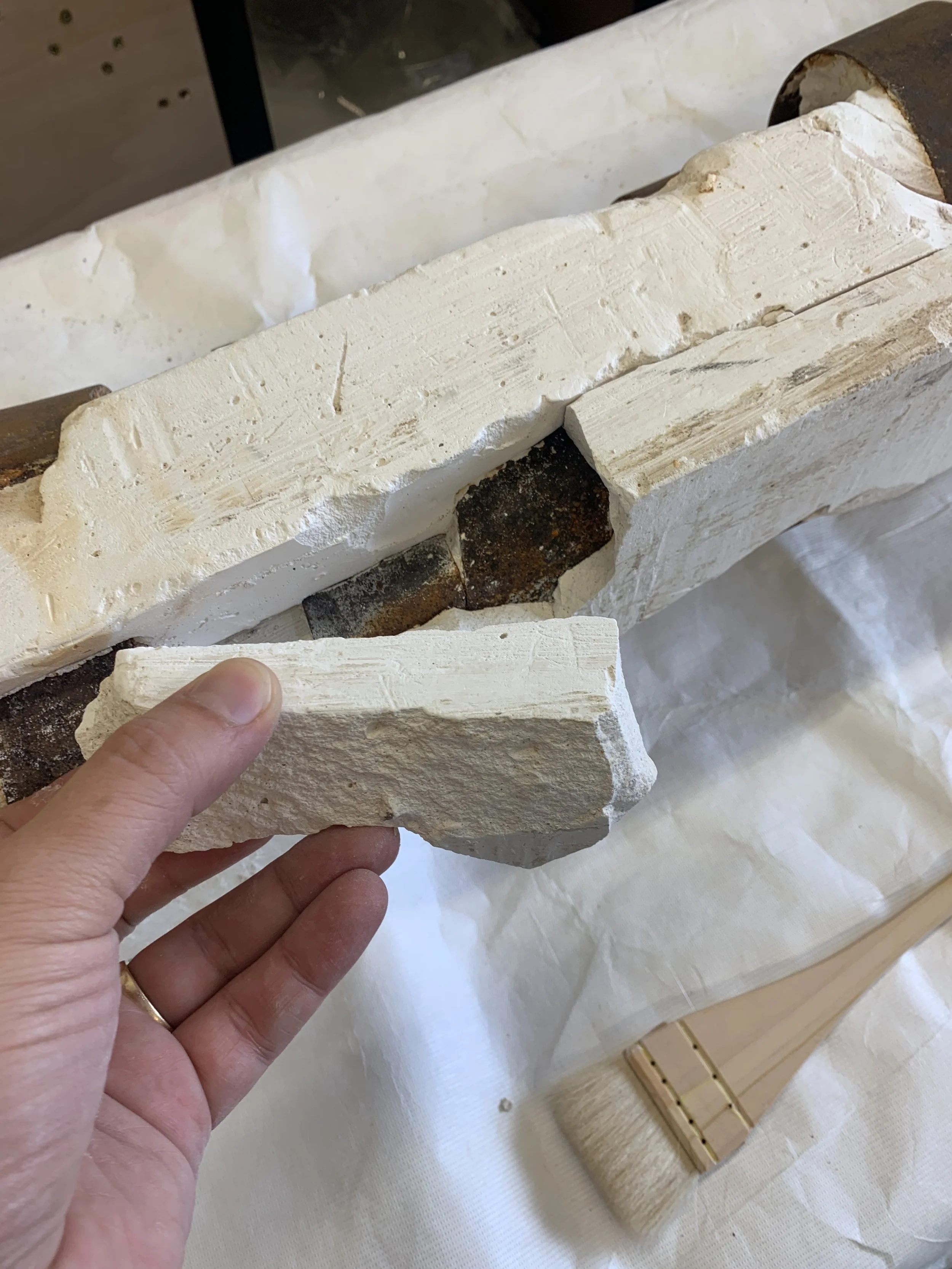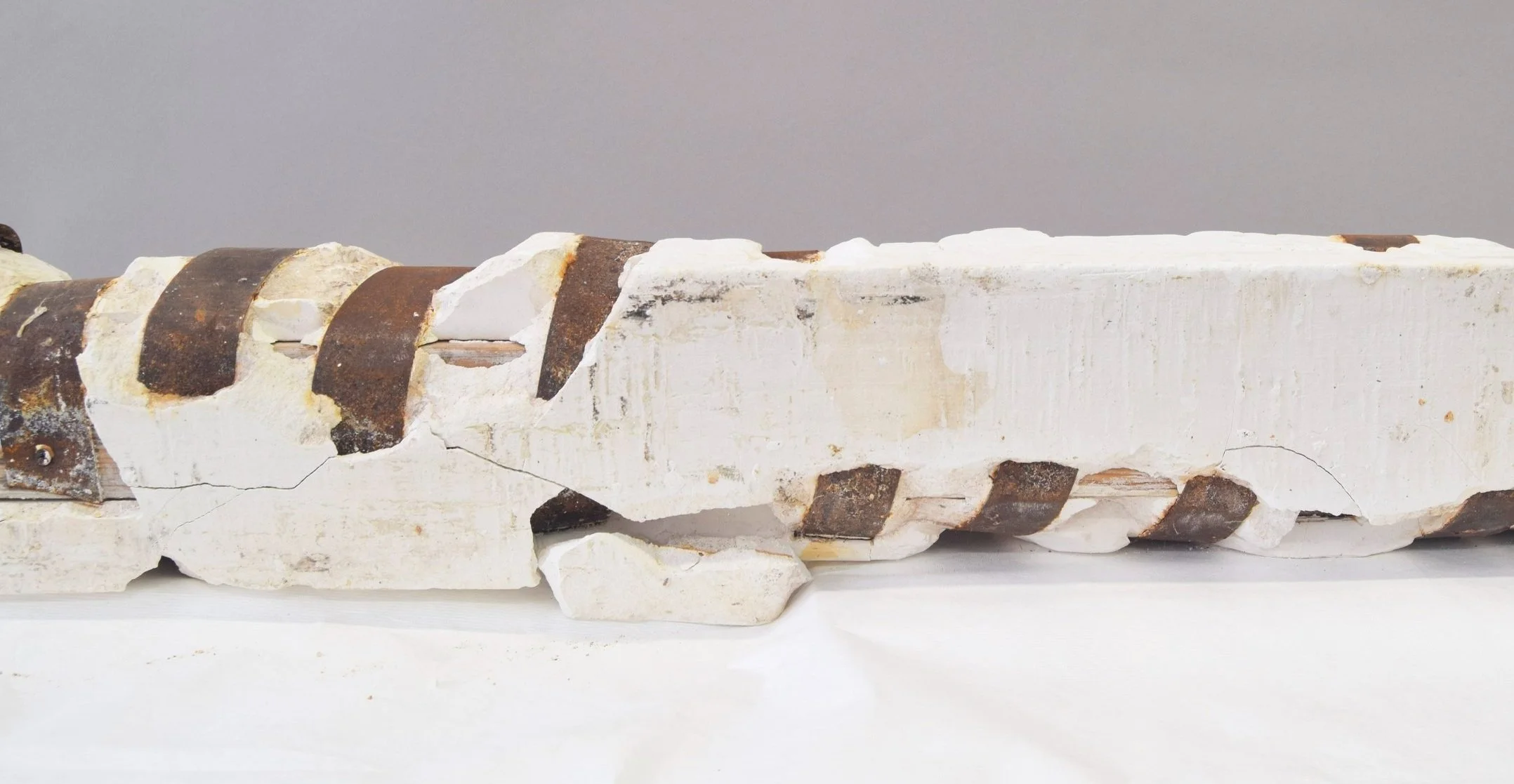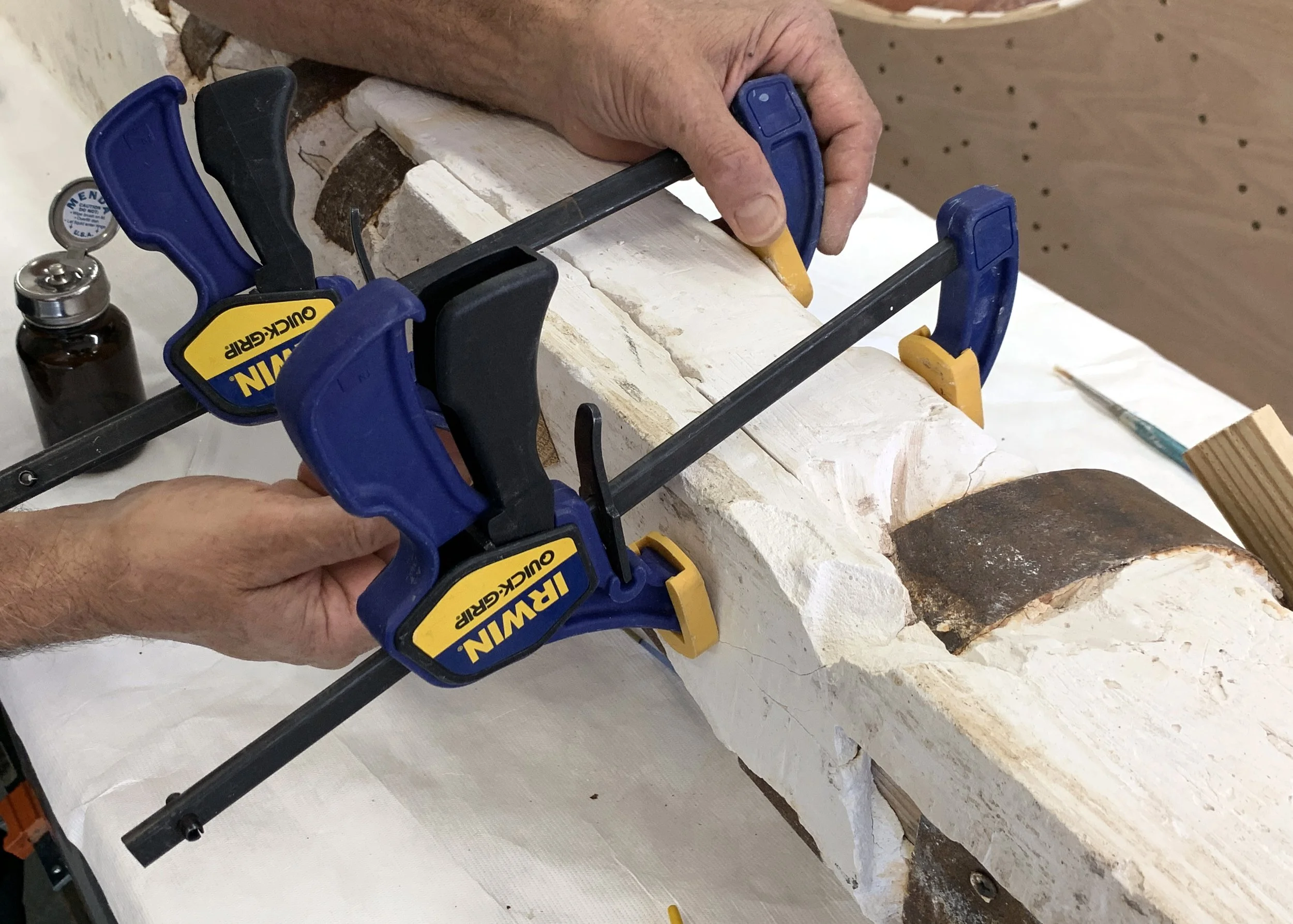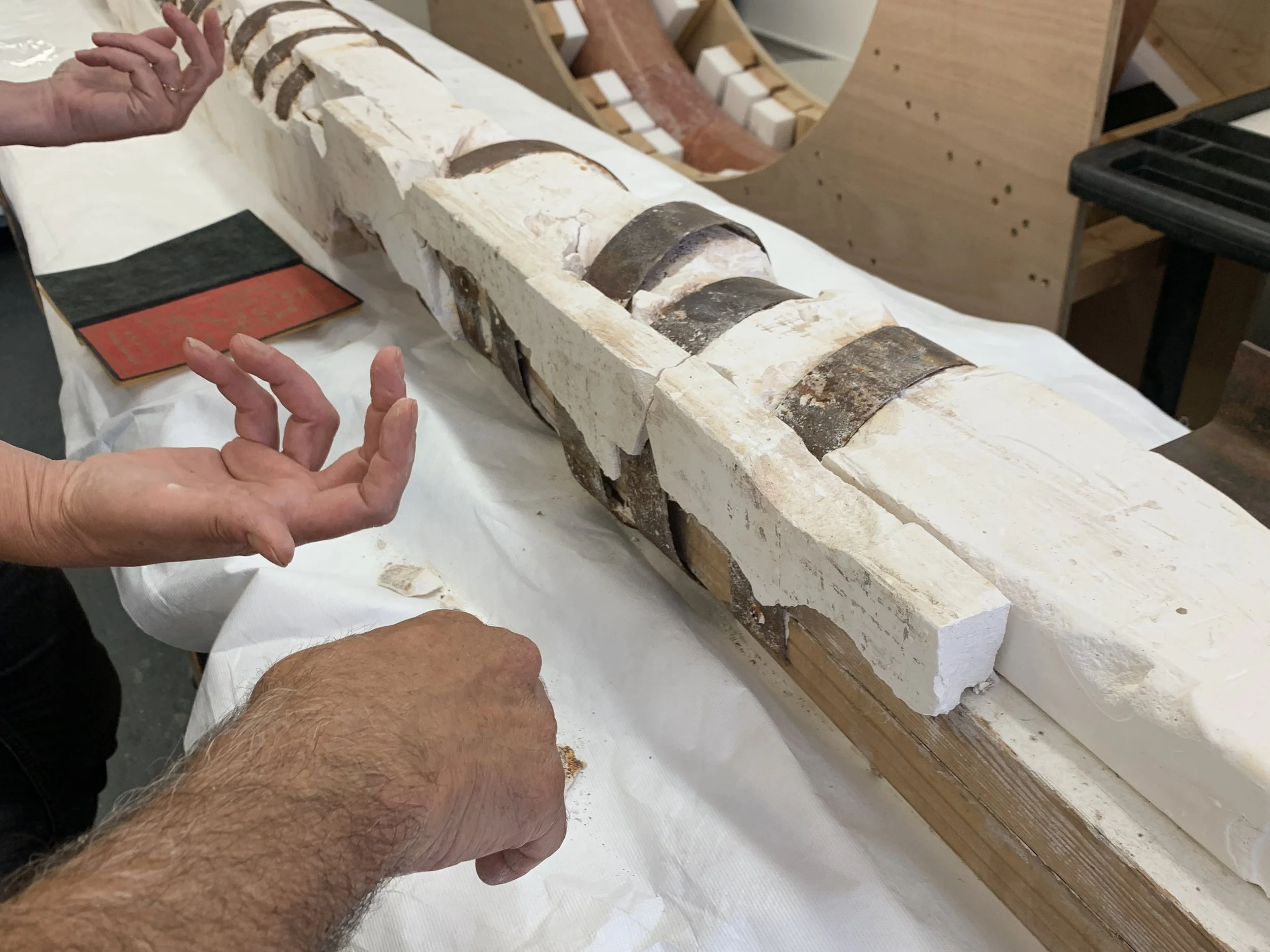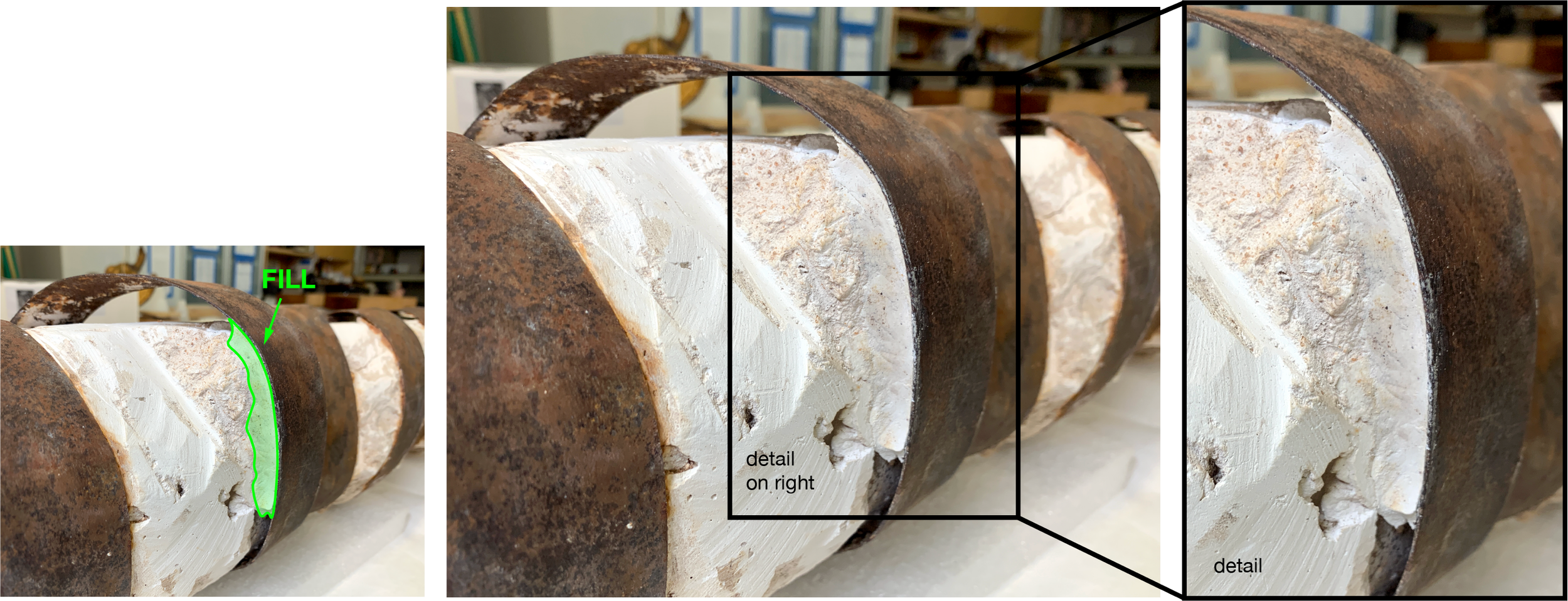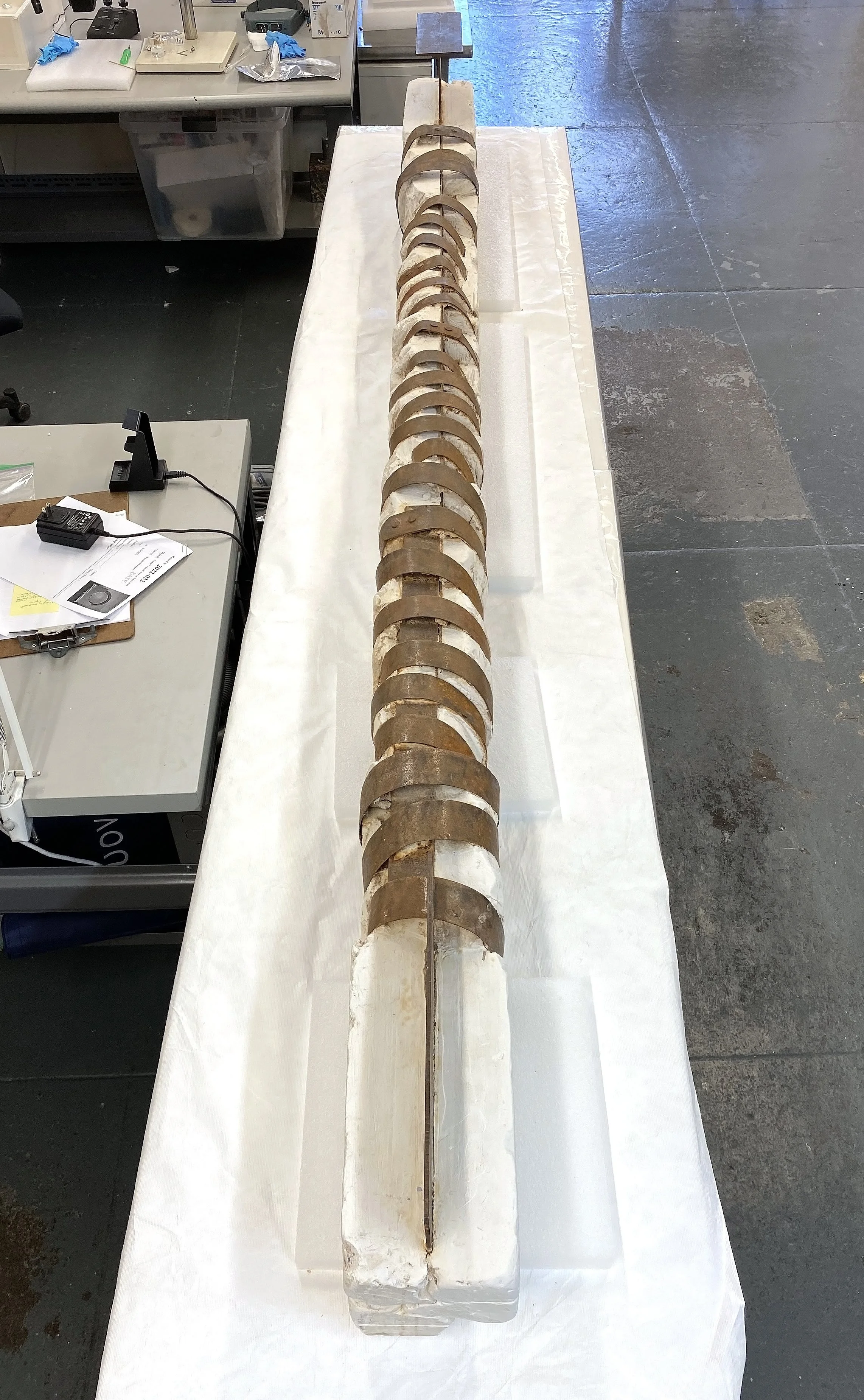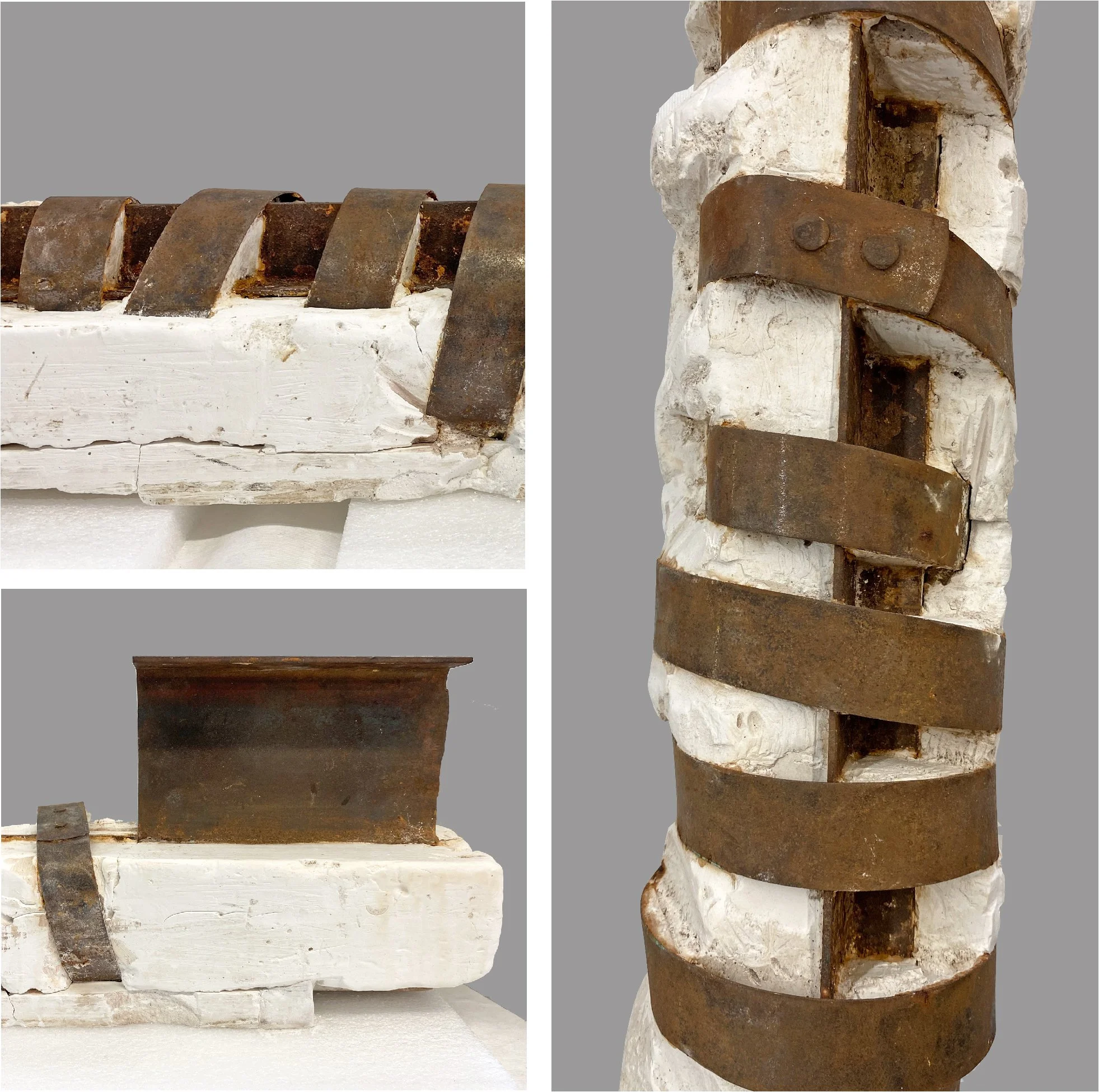All of These Things are
Not Like the Other
The interdisciplinary American sculptor Terry Adkins (1953-2014) worked in performance, sculpture, video, and photography and exhibited his work at the Whitney Museum of American Art and The Smithsonian. His work Particular Zither (1990) was delivered to a private conservation studio after sustaining damage from both impact and metal corrosion. Working with the object meant navigating the realities of working with three materials with vastly different compositions and aging behaviors.
Condition
The sculpture consists of a long white plaster “body” encircled by twenty-five 2” wide corroded metal “straps,” which are attached to the underside of the piece in a quasi-parallel pattern .
Cracks and loose pieces were visible throughout, but the bulk of the structural damage was on the underside of the piece. Many blocks and chips of various sizes had detached, likely due to the internal expansion of the material caused by the formation of corrosion products on the embedded metal straps.
Many blocks of various sizes had broken loose from the main body of the sculpture, likely due to the expansion of the metal straps as corrosion products formed on their outer surfaces. One of the first steps in assessing the object was to determine the original locations of these loose blocks.
Breaks
White, loose powdery material - likely also due to the expansion of the metal straps - was seen throughout the piece but was concentrated where the straps interact with the plaster body. Localized areas of transferred red-orange corrosion product have appeared in these areas as well, staining the adjacent plaster surface.
Corrosion-Induced Changes
Treatment Rationale
The variation and worn nature of the object lends itself to many of the condition issues above remaining visible. Many of the cracks which appear throughout may have occurred over time while others may have originated during production, as the artist likely used percussive tools (e.g., chisels, files) to remove dried plaster from around the straps. The sculpture’s structural stability, which had not been compromised, was deemed most important when determining treatment options.
It was decided to selectively clean the object’s surfaces to remove dust, grime, and superficial accretions, consolidate flaking or friable plaster, and reintegrate detached pieces of plaster as appropriate.
Preventive conservation recommendations were also deemed necessary, as further exposure to an environment with high humidity levels or large fluctuations in humidity can induce further corrosion and cracking.
Treatment
While the bulk of the treatment focused on the body of the sculpture, several bent straps needed to be stabilized to keep them from springing into the newly consolidated plaster. Structural fills were made using a two-part epoxy putty which were later inpainted.
The break edges of the detached pieces were consolidated using a 5% w/v B72 adhesive then reintegrated where possible using 40% B72 adhesive. Cracks were flooded with a 5% B72 adhesive followed by a small amount of 40% B72 adhesive applied using syringes and small brushes to keep additional fragments from detaching. The flaking and friable plaster was consolidated using a 5% B72 adhesive where appropriate. Clamps, weights, and tension bands were used over the course of several days to realign the various surfaces of the sculpture.
Reintegration and Stabilization
Structural Fills
Completed Treatment
The treatment was successful in bringing the artwork’s appearance more in line with the artist’s intention. Stabilizing the intact plaster while reintegrating detached fragments meant constantly navigating how to handle materials with unique aging properties in constant contact with each other. The project strengthened my material understanding and reinforced my concept of working collaboratively to realize the treatment of a contemporary sculpture.




